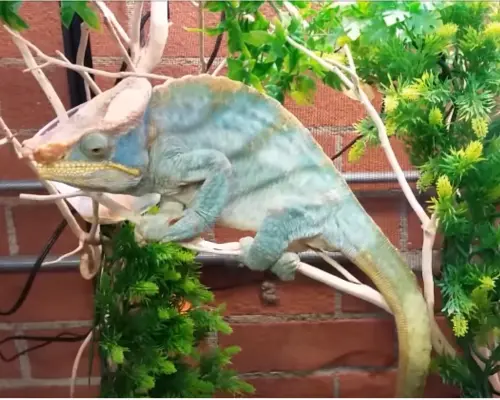One of the largest animals in the world is the Parson’s Chameleon. It’s common and endemic to the country of Madagascar. The Parson’s chameleon was named in honor of James Parsons, a renowned British physician. The common Calumma parsons parsonii and the rarer Calumma parson cristifer are recognized as the common Calumma parsons parsonii and the common Calumma parson cristifer. As a pet, this particular chameleon species is very popular. One of the few chameleons that can be legally exported is it.
The Parson’s chameleon is at risk because of rampant collecting which causes its population in the wild to plummet. Efforts have been made to stop the trade in order to prevent further decline of the species. The males have a nose with a fork and the females have a nose with a few appendages. Their bulging eyes are bright orange, and they have green skin. They have a distinctive yellow lip.
The Parson’s chameleon has an odd shape and rough skin which makes it easy to recognize. They are generally green in color, with different shades of green for the sexes. Females appear smaller than males because of their body color. The males are completely green or turquoise.
The eastern and northern parts of Madagascar are where the Parson’s chameleon is located. The tropical rainforest is where this chameleon prefers hot and wet environments. They have been known to adjust to cooler climates. Coffee plantations are where the reptiles have adapted to human habitation.
parson’s chameleon Behavior
They are mostly indifferent and don’t pay much attention to things happening around them. The males could become aggressive and territorial during the courting phase. The Parson’s chameleon regulates its temperature by basking in the sun for about 20 minutes before moving to shade.















